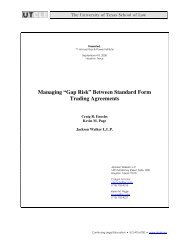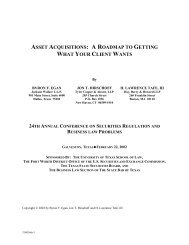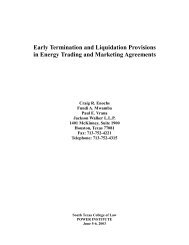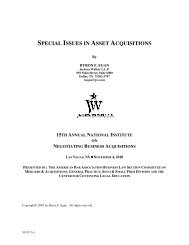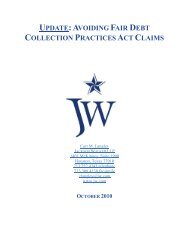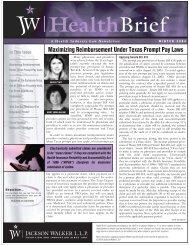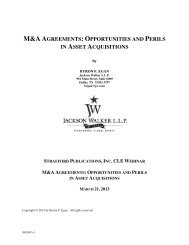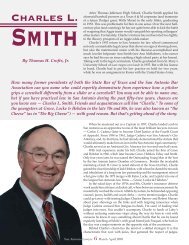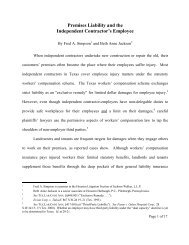Legal Implications of User Generated Content: YouTube, MySpace ...
Legal Implications of User Generated Content: YouTube, MySpace ...
Legal Implications of User Generated Content: YouTube, MySpace ...
You also want an ePaper? Increase the reach of your titles
YUMPU automatically turns print PDFs into web optimized ePapers that Google loves.
V. Practical TipsA. For UGC Website Operators1. Do everything possible to ensure that your business falls under the § 512(c)safe harbor provision. This means consultation with an attorney versed inthis area <strong>of</strong> the law. This also means strict and prompt compliance with thenotice and takedown procedures.2. But rather than relying on the safe harbor, a safer approach may be to seekout licenses from content owners. <strong>YouTube</strong>, <strong>MySpace</strong>, and other UGCwebsites have recently begun utilizing this procedure.3. Use click-wrap agreements rather than passive terms and conditions.What is the difference? Click wrap agreements require the user to scrollthrough the terms and conditions and click an “accept” button. Whereaspassive terms and conditions can just be language on the webpage oraccessible via a link but where there is no requirement to click on the link foracceptance. Courts are more likely to enforce a click wrap agreement ratherthan passive terms and conditions. 514. Think carefully about the contents <strong>of</strong> the click wrap agreements so as toensure that all appropriate representations, warranties, and indemnities fromsubmitting users are given. As an example <strong>of</strong> the largest UGC sites approachto terms and conditions, attached are the latest terms and conditions from<strong>YouTube</strong> and <strong>MySpace</strong>.5. In order to make it more likely to fall within the § 512(c) safe harbor by nothaving a “direct financial benefit,” consider removing ads from areas <strong>of</strong> yourwebsite where UGC is posted.a. For example, when a <strong>YouTube</strong> user plays a video, one will notice thatthere are no advertisements that precede the video. Contrast thiswith a non-UGC video on a website such as ESPN.com. This wascertainly a deliberate step taken to try to prevent a court from rulingthat <strong>YouTube</strong> receives a “direct financial benefit” from the infringingmaterial. It remains to be seen whether this will be sufficient orwhether the presence <strong>of</strong> an ad on the same webpage as the UGCvideo will rise to the level <strong>of</strong> “direct financial benefit.”51 1 John W. Hazard, Jr., COPYRIGHT LAW IN BUSINESS AND PRACTICE § 6:30 (rev. ed.) (“With respect to click wraplicenses for downloaded s<strong>of</strong>tware, a technical option that may greatly enhance enforceability <strong>of</strong> a license as to a particularlicensee is if the affirmative action <strong>of</strong> assent (typically clicking on an ‘I agree’ icon) is recorded and attributed toinformation identifying the licensee, e.g., information transmitted pursuant to an online registration process.”).14




